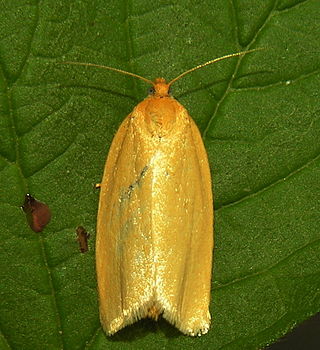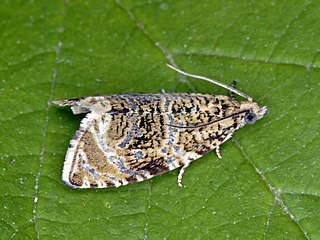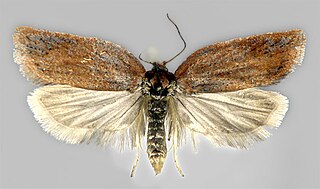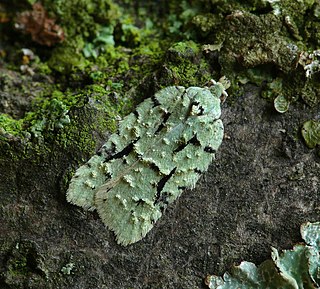
Cochylis nana is a moth of the family Tortricidae. It was described by Adrian Hardy Haworth in 1811. It is found in Europe, Amur Oblast of Russia and Nova Scotia in Canada.

Acleris forsskaleana, the maple leaftier moth, is a moth of the family Tortricidae. It is found in Europe and North America in woodlands and gardens.

Archips podana, the large fruit-tree tortrix, is a moth of the family Tortricidae. The species was first described by Giovanni Antonio Scopoli in his 1763 Entomologia Carniolica. It is found in Europe, Asia from Anatolia to Japan and is an introduced species in North America.

Archips xylosteana, the variegated golden tortrix or brown oak tortrix, is a moth of the family Tortricidae.

Aphelia paleana, the timothy tortrix, is a moth of the family Tortricidae. It is found in Europe, and across the Palearctic to China and the Russian Far East.

Agapeta hamana is a moth of the family Tortricidae. It is found in Europe, western and southern Siberia, the Caucasus, Kazakhstan, Transcaucasia, Asia Minor, Central Asia, Iran, Afghanistan, Mongolia, western China and northern India.

Aleimma loeflingiana is a moth of the family Tortricidae. It is found in Europe and the Near East.

Syricoris lacunana, the dark strawberry tortrix, is a small moth species of the family Tortricidae. It is found in the Palearctic realm.

Acleris comariana, the strawberry tortrix, is a moth of the family Tortricidae. It is found in Europe, the Caucasus, Amur, Kamchatka, China, Korea and Japan.

Archips rosana, the rose tortrix, is a moth of the family Tortricidae. It is found in both the Palearctic and Nearctic realms.

Acleris rhombana, the rhomboid tortrix, is a moth of the family Tortricidae. It is found in the Palearctic realm, from Europe to the Caucasus, Armenia, and Turkmenistan.

Acleris rufana is a moth of the family Tortricidae. It is found from northern, central and south-western Europe through southern Siberia to the Russian Far East and Japan.

Cochylidia rupicola, the chalk-cliff tortrix or conch, is a moth of the family Tortricidae.

Acleris literana, the sprinkled rough-wing, is a moth of the family Tortricidae. The species was first described by Carl Linnaeus in his 1758 10th edition of Systema Naturae. It is found in most of Europe and in the Near East.

Apotomis betuletana is a moth of the family Tortricidae. It is found in most of Europe. It is also found in the eastern part of the Palearctic realm.

Acleris holmiana, the golden leafroller moth, is a moth of the family Tortricidae. It is found in most of Europe and Asia Minor.

Archips crataegana, the brown oak tortrix, is a moth of the family Tortricidae. It is found in most of Europe east to Japan.

Acleris ferrugana is a species of moth of the family Tortricidae. It is found in China, most of Europe and has also been recorded from North America.

Ancylis myrtillana is a moth of the family Tortricidae. It was described by Treitschke in 1830. It is found in most of Europe and across the Palearctic.It has also been recorded in North America. The habitat consists of moorland.

Acleris schalleriana, the viburnum button or Schaller's acleris moth, is a moth of the family Tortricidae. It was described by Carl Linnaeus in 1761. It is found in most of Europe. It is also found in North America. Acleris viburnana is a possible synonym that refers to the North American populations.





















